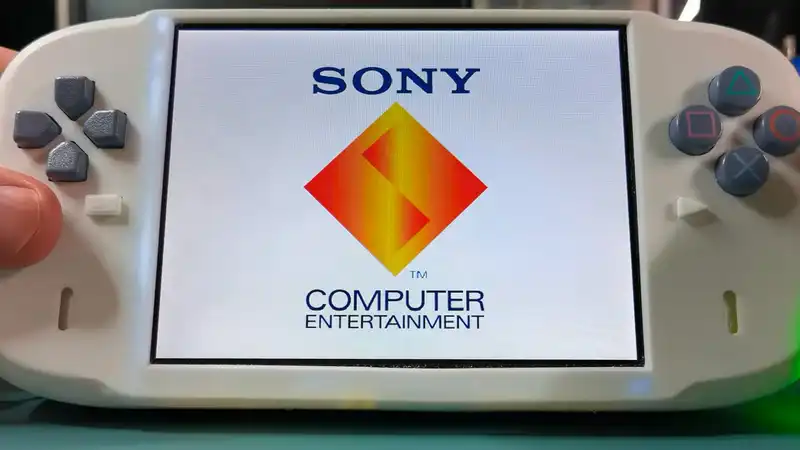Despite being a DIY build, the console has a very sleek appearance. The sleek white casing houses the PlayStation's original cross, triangle, round, and square buttons, D-pad, start, and select buttons. The left and right shoulder buttons are, from my description, identical to a regular PlayStation pad, except for the 480p VGA screen in the middle.
There is a lot more to this handheld than meets the eye. If you take it apart, you'll see a nice tangle of PCBs, wires, batteries, and speakers. Junky in a good way, it uses the original PU-18 motherboard from the PS1, but because the PS1 shell is quite large, the motherboard had to be folded in half to fit into the handheld.
". . the PU-18 motherboard had to be cut in half and folded to fit in this small case. A lot of magnetic wire was needed," the creator said in a post on the bitbuilt.net forum.
Thanks to the space savings, they were able to pack an SD card reader, rumble function, and twin speakers into the device. The device measures just 181 x 91.5 x 30.25 mm and does not include a disk drive. Instead, it uses Xstation to load games from an SD card.
Fixing all the traces that were cut in the PCB required running a large amount of magnetic wire. A daunting task, but easier to watch from a distance than to do it myself. Incredibly, the job was a success and the PS1 portable ran for up to 2.5 hours. This was due to the included 3500mAh battery. This is rather better than the best handheld gaming PCs available today, which are lucky to be able to game for more than an hour.
There are a few areas where it does not work as intended. There is no volume control, and some of the power and reset functions are not wired. The last one seems pretty important for the longevity of this device, but may be difficult to sort out given that the motherboard is folded in. There is also the problem of accidentally pressing the power button and turning off the entire device.
However, it is an incredibly impressive device considering it was built as a DIY project.


Comments